- Home
- Maurice Magre
The Angel of Lust
The Angel of Lust Read online
The Angel of Lust
by
Maurice Magre
Translated, annotated and introduced by
Brian Stableford
A Black Coat Press Book
TABLE OF CONTENTS
Introduction 4
THE LOVE LIFE OF MESSALINA 15
THE ANGEL OF LUST 116
CHRISTIAN ROSENKREUTZ AND THE ROSICRUCIANS 360
FRENCH SCIENCE FICTION & FANTASY COLLECTION 380
BY THE SAME AUTHOR 388
Introduction
This is the fourth volume of a twelve-volume set of translations of Maurice Magre’s prose fiction. It contains translations of the novella, La Vie amoureuse de Messaline (1925), as “The Love Life of Messalina,” the novel published as La Luxure de Grenade (1926), as “The Angel of Lust,” and the chapter from Magiciens et illuminés (1930) entitled “Christian Rosenkreutz et les Rose-croix,” as “Christian Rosenkreutz and the Rosicrucians.”
Volume One, The Marvelous Story of Claire d’Amour and Other Stories, contains translations of early short stories, including the collection Histoire merveilleuse de Claire d’Amour suivie d’autres contes merveilleux (1903) and six other stories from various sources, published between 1901 and 1913.
Volume Two, The Call of the Beast and Other Stories, contains translations of his first three works of prose fiction in volume form, Les Colombes poignardées (1917), as “Stabbed Doves,” La Tendre camarade (1918), as “The Tender Comrade” and L’Appel de la bête (1920), as “The Call of the Beast.”
Volume Three, Priscilla of Alexandria and Other Stories contains translations of the original version of the story collection Vies des courtisanes, first published in Oeuvres Libres 23 (1923), as “Courtesans’ Lives” plus the additional story added to the version published in volume form in 1925, and the novel Priscilla d’Alexandrie (1925), as “Priscilla of Alexandria.”
Volume Five, The Mystery of the Tiger, contains translations of the novella Le Roman de Confucius (1927), as “The Story of Confucius,” and the novel Le Mystère du tigre (1927), as “The Mystery of the Tiger.”
Volume Six, The Poison of Goa, contains translations of the novel Le Poison de Goa (1928), as “The Poison of Goa,” and the prose poems contained in Le Livre des lotus entr’ouverts (1926), as “Lotus Blossoms.”
Volume Seven, Lucifer, contains a translation of the novel originally published under the same title in 1929 and the novella La Nuit de haschich et de l’opium (1929), as “The Night of Hashish and Opium.”
Volume Eight, The Blood of Toulouse, contains translations of the novel Le Sang de Toulouse (1931), as “The Blood of Toulouse,” and the chapter from Magiciens et illuminés entitled “Le Maître inconnu des Albigeois,” as “The Secret Master of the Albigensians.”
Volume Nine, The Albigensian Treasure, contains translations of the novel Le Trésor des Albigeois (1938) as “The Albigensian Treasure,” and the collection of vignettes “Communication avec la nature” from La Beauté invisible (1937), as “Communication with Nature.”
Volume Ten, Jean de Fodoas, contains translations of the novel Jean de Fodoas: aventures d’un Français à la cour de l’empereur Akbar (1939) as “Jean de Fodoas” and the chapter from Magiciens et illuminés entitled “Le Mystère des Templiers,” as “The Mystery of the Templars.”
Volume Eleven, Melusine, contains translations of the novel Mélusine, ou le secret de solitude (1941) and the collections of vignettes “Le Côté d’ombre des âmes” and “Révélation des mondes invisibles” from La Beauté invisible, as “The Dark Side of Souls” and “The Revelation of Invisible Worlds.”
Volume Twelve, The Brothers of the Virgin Gold, contains a translation of the novel Les Frères de l’or vierge, first published posthumously in 1949.
The two works of historical fiction featured in the present volume follow on thematically from Maurice Magre’s first long work of historical fiction, Priscilla d’Alexandrie, and are closely associated with it in their narrative strategy, tone and content.
The earlier novel was expanded and transformed from a short story contained in Vies des courtisanes (1923), which describes how the eponymous heroine, tricked into taking part in the murder of the neo-Platonist philosopher Hypatia, attempts to expiate that sin in an unorthodox manner, by becoming a prostitute in Constantinople, and subsequently decides to avenge Hypatia, initially by cutting the throat of the leader of the murderous mob when he visits her brothel. After having returned to Alexandria, she hires a sorceress to employ black magic to murder Cyril, the Bishop of Alexandria, who instigated the murder.
The expanded version not only offers a much more elaborate account of Priscilla’s life and quest, but an extravagant account of the ideas of the neo-Platonist philosophers of Alexandria, giving center stage to three hypothetical exemplars, one of whom eventually becomes a solitary ascetic, while the second sets forth to find the wisdom of the ancients in a document which he believes to be contained in the tomb of Alexander the Great, buried under the city by an earthquake many years before, and the third sets off for India to follow in the footsteps of Apollonius of Tyana, as detailed in the “biography” of that sage by Philostratus.
The introduction to Volume Two of the present series suggested that the lurid and horrific imagery abundantly imported into the longer version of Priscilla d’Alexandrie was partly a response to the fact that Magre had recently being diagnosed with syphilis, contracted during a long period of obsessive promiscuity, to which his marriage in 1913 had not brought a conclusion. The effects of that diagnosis are not only reflected in the imagery of disease and decay imported into the novel, and the narrative’s continual juxtaposition of sexual intercourse with nightmarish visions and death, but also in its intense interest in philosophy and “ancient wisdom” as a possible route to spiritual enlightenment and transcendence.
It was inevitable that the transformation of Magre’s attitude to sex would be coupled with an intensification of his interest in the spiritual, in opposition to and conflict with the carnal, and in the long history of attempts by great thinkers to determine and map out the proper intellectual mission of human beings. The diagnosis of syphilis also coincided with Magre burgeoning interest in and involvement with the abundant Parisian vestiges of the nineteenth-century occult revival, and it was probably equally inevitable, in consequence, that it was largely to unorthodox accounts of spirituality and history that Magre turned in search of inspiration for a way through his own existential predicament.
In his subsequent non-fiction Magre sometimes referred to Philostratus’ biography of Apollonius of Tyana skeptically, seemingly fully aware of the fact that it is a work of fiction. Nevertheless, he was more than willing to adapt its fanciful account of Apollonius’ life not only into his fiction, as a useful narrative device, but also into the non-fiction he soon began to produce in abundance, some of which is scholarly fantasy offering an unorthodox account of the history of human thought and occult wisdom. Philostratus’ account of Apollonius ultimately supplied the first chapter and imaginative bedrock of Magre’s idiosyncratic and commercially successful account of the imaginary “Hermetic Tradition” in Magiciens et illuminés [Magicians and Illuminati] (1930), and other candidate elements of the imaginary secret history that he was in the process of building play important roles in both of the works contained in the present volume.
One of the supernatural motifs prominently employed in Priscilla d’Alexandrie is the Ark of the Covenant, ostensibly removed to Alexandria when the Romans destroyed the Temple in Jerusalem. In the plot of that novel it has to be saved again when Cyril institutes a pogrom against the city’s Jews, and it is transported into the desert under magical protection. The protection is question seems to be strang
ely limited, however, and even more strangely selective, illustrating a perennial problem that writers of supernatural historical fiction and inventors of supernatural secret history always face: that of explaining why, if great talismans commanding occult forces really exist, they seem to be so mercurial and idiosyncratic in their effects. The Ark crops up again in La Luxure de Grenade, where it is credited with even greater power—a move that reinforces the problem of explaining why it does not appear to have played any role in known history since the fifteenth-century, in which the novel sets its hypothetical rediscovery.
Magre’s interest in the various philosophies contemporary with early Christianity, and their elimination by Christian ideological monopolism, elaborately displayed in Priscilla d’Alexandrie, is further reflected in La Vie amoureuse de Messaline. The latter novella might have been written after La Luxure de Grenade—which is advertised in Priscilla d’Alexandrie as a work in progress entitled L’Ange de la luxure, a much preferable title that I have restored to the translation—although it beat it into print by a few months, appearing in December 1925. A previous translation of La Vie amoureuse de Messaline was published in New York by Louis Carrier in 1929 entitled Messalina, Roman Temptress, as an element in the “naughty library” of books, mostly of French origin that were sold under the counter or via mail order. Although that edition is not particularly scarce, it seemed worthwhile to make a new translation for the present series.
As with the sources of the earlier novel, the anecdotes attached to the scandalous life of the wife of the Emperor Claudius are pure fantasy, concocted long after her death by the highly unreliable Roman historians Tacitus and Suetonius, who had a strong political interest in blackening the emperor’s reputation. Precisely because they were designed as scabrous slander, however, their inventions offered an account far more exciting than anything that the real woman could actually have accomplished, and presented an immensely useful gift to future writers of melodramatic fiction. Magre’s greatly-elaborated version of the story has no scruples about ramping up the melodrama by a further order of magnitude. His introduction of a bizarre cult into which the future empress is initiated in her teens echoes the spell cast on Priscilla as a child by the witch Khepra in the novel version of her story, which eventually renders her a victim of raging lust, although Messalina is far readier to comply with that destiny than Priscilla.
In much the same way that Apollonius of Tyana is introduced into the earlier novel, La Vie amoureuse de Messaline, introduces one of his contemporaries, alive and active in this case, thanks to the earlier temporal setting. The character in question is Simon Magus, the Gnostic messianic candidate briefly mentioned in the Acts of the Apostles, whose story is more elaborately told, is a hostile and deliberately slanderous fashion, by such Christian apologists as Irenaeus and Justin Martyr. Both those writers relate the legend that Simon traveled with a prostitute whom he represented as a reincarnation of Helen of Troy and a mystical embodiment of Ennoia, or Sophia: an incarnation of divine wisdom. That legend, not unnaturally, is what drew Magre’s fervent attention.
Magre must have been familiar with several previous literary dramatizations of the life of Messalina, especially Alfred Jarry’s Messaline (1901; tr. as Messalina) and Félicien Champsaur’s L’Orgie Latine (1904; tr. as The Latin Orgy), both authors having been associates of the Symbolist Movement and with both of whom he had been personally acquainted, at least slightly, when the relevant books were published. Doubtless he wanted to make his own version sufficiently different from theirs for there to be no suspicion of imitation—and he succeeded—but he must also have been concerned to fit his account of Messalina into the evolving historical pattern sketched in his fiction to date. He did that too, especially in his unusual development of the character of Valerius Asiaticus, whom he reinvented as a philosopher cast in a pantheistic mold that was to be elaborately developed in his subsequent works: a model of the sages whose celebration is the purpose of the secret history he formulated, and the antithesis of the embodiment of carnal lust that Messalina becomes, in spite of the prophetic warnings issued to her by Simon.
Simon Magus was to crop up again in Magre’s work in the back-story of Lucifer, in which he is said to have distributed powerful talismans around the Mediterranean, including the south of France, for the use of subsequent generations of magicians and seekers of divine wisdom, and an elaborated version of the legend of Helen becomes a basis for re-enactment by the black magicians features in the plot. That association of Simon with the forces of evil was, however, the prelude to his subsequent relegation from Magre’s version of the great hermetic tradition, and the role as an ancient distributor of hidden talismans in the Midi attributed to him in Lucifer was eventually taken over in the back-story of Mélusine ou le secret de solitude by Apollonius of Tyana.
Magre’s Messalina is possessed by Miphileseth, a version of the god Priapus, and thus becomes an incarnation of lust. The equivalent role is taken on in La Luxure de Grenade by Isabelle de Solis, also based on a real historical individual, the daughter of a Castilian nobleman who was captured by raiders from Granada and sold as a slave after her family refused to pay a ransom for her. She became the concubine, and subsequently the consort, of the Sultan of Granada referred to in the story as Abul Hacen; she converted to Islam, took the name Zoraya or Soraya, and had two children by the Sultan. When she was captured during a civil war in 1482, the Sultan gave up his throne in exchange for her life. After his death she and her sons reconverted to Christianity. Her adventures made her famous and she is featured in several literary works subsequent to the present text.
For dramatic purposes, Magre collapses the time-scale of those events in the novel, which finds the fictitious Isabelle still in Seville long after the real one had been in Granada for some years, his plot conveniently obliterates her children and offers a very different account of her life following the strife of 1482. In Magre’s story, Isabelle, aided by magic, becomes a powerful symbolic embodiment of Lust, always threatening to seduce the novel’s protagonist, Almazan, away from the philosophical studies that he has commenced with Christian Rosenkreutz—studies that are under threat anyway because of the hired assassins that the Spanish Inquisition, headed by Tomas de Torquemada, is sending out to murder the leading freethinkers of Europe.
The plot of La Luxure de Grenade might well made up as the author went along, although it might simply have changed direction in the writing; either way, several mysteries and plot-threads deliberately introduced in the early chapters are either forgotten or fizzle out tamely, and Magre seems to have had particular difficulty in following through the supernatural improvisations of his plot. Having brought Christian Rosenkreutz into his story, and imagined a great conflict between rival fraternities dedicated to good and evil, had difficulty determining what might be done with such sweeping elements. The motif of some such ongoing covert conflict was to recur again in his work, most notably and most extravagantly in Lucifer, but whenever it comes to specifying how the members of either organization actually spend their time, he seems to have run into limitations of imagination.
When he had finished La Luxure de Grenade and looked back at it, Magre might well have seen all too clearly that the most successful episodes, artistically and dramatically—the kidnapping of Princess Khadidjah by lustful lepers and the bloodbath that follows the conclusion of the siege of Malaga—were incidental to the novel’s presumed central theme, and that there was very little, in the end, that Christian Rosenkreutz and his pupils could actually do within the presumed framework of known history except remain in hiding, effectively invisible.
Magre was prepared to take the story of Christian Rosenkreutz’s foundation of the Order of the Rose-Cross, as detailed in the anonymous scholarly fantasies Fama Fraternitatis (1614) and the Confessio Fraternitatis (1615) seriously, and to find the character, unlike Simon Magus, entirely appropriate to recruitment into his secret tradition of spiritual wisdom. In order to adapt him to a cruc
ial role in his own scholarly fantasy, as outlined in Magiciens et illuminés, however, he changed the chronology adopted in La Luxure de Grenade, moving Rosenkreutz’s life-story back to the early fourteenth century in order to connect it up with the history of the Albigensians, or Cathars, who had been extirpated in the south of France by a crusade launched by Pope Innocent III.
Magre’s version of that crusade became a crucial element of his secret history, imagining the Albigensians as the heirs and prolific employers of the authentic ancient wisdom, which the Church was determined to stamp out at all costs, in order to protect its dogmatic monopoly. Christian Rosenkreutz was made into one of the Albigensians’ direct heirs, which required the adjustment in his chronology. I have added a translation of the relevant chapter from Magiciens et illuminés to the present volume as an informative appendix, which helps to fill in much of the presumed back-story not spelled out in La Luxure de Grenade, albeit in a significantly different variant version.
Like Priscilla d’Alexandrie and La Vie amoureuse de Messaline, La Luxure de Grenade is a violent erotic melodrama, combining the imagery of sex, horror and death in much the same fashion. Although the three works show a certain progressive loss of energy and intensity—an inevitable result of reiteration—La Luxure de Grenade is still replete with extravagantly dramatic tableaux possessed of a fine excess. The climax of Princess Khadidja’s story is brilliantly effective, easily equaling the similar tableaux in Priscilla d’Alexandrie, and its aftermath, in which Emir Daoud unwittingly ferries the Ark of the Covenant to its appointment with destiny, is similarly overwrought in its flamboyance. The portrait of Torquemada offered in the final chapters, although brief by comparison with the portrait of Bishop Cyril painted in Priscilla d’Alexandrie, is deftly effective. It is, however, not surprising that after its slightly faltering conclusion, Magre moved on from that cluster of works to attempt projects of a different kind.

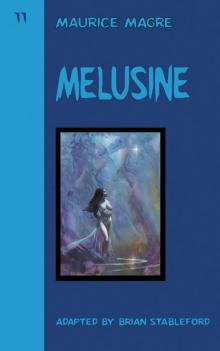 Melusine
Melusine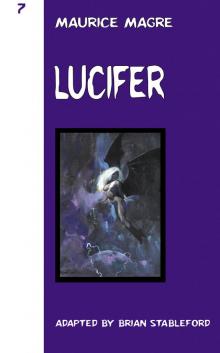 Lucifer
Lucifer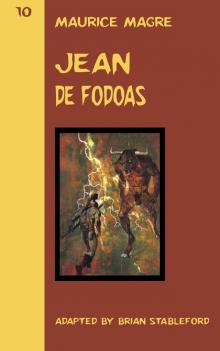 Jean de Fodoas
Jean de Fodoas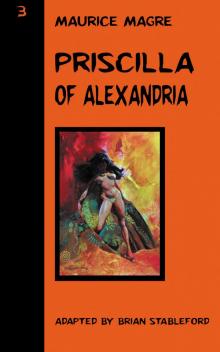 Priscilla of Alexandria
Priscilla of Alexandria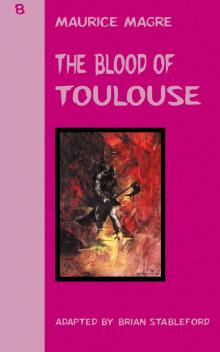 The Blood of Toulouse
The Blood of Toulouse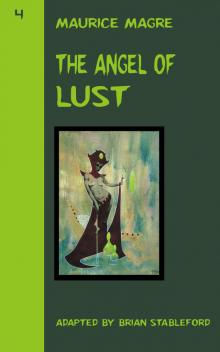 The Angel of Lust
The Angel of Lust